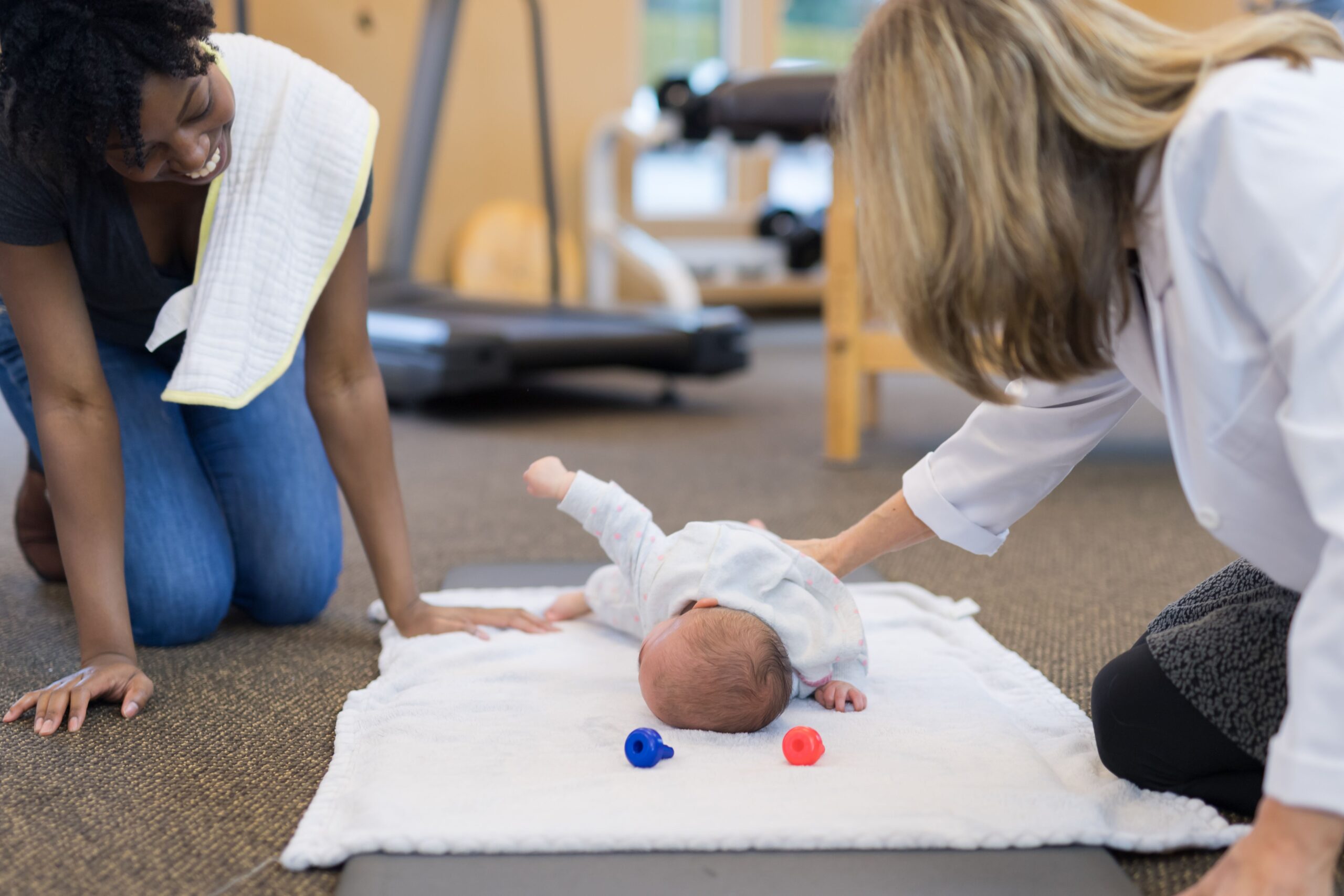As parents, we all want to give our babies the best start in life, and one way to do this is by encouraging their physical development through baby gymnastics. These activities can help build strength, coordination, and confidence in your little one, setting the foundation for a lifetime of healthy movement. In this blog post, we’ll explore the benefits of baby gymnastics, share some simple and effective strategies for incorporating them into your daily routine, and answer five frequently asked questions.
The Benefits of Baby Gymnastics
Baby gymnastics offers numerous benefits for your child’s physical development, including:
- Building strength in the muscles necessary for crawling, walking, and other motor skills
- Developing coordination and balance
- Enhancing flexibility and range of motion
- Encouraging body awareness and spatial orientation
- Promoting cognitive development through problem-solving and exploration
- Fostering a love of physical activity and movement
- Helping your child develop self-confidence and a positive body image
- Providing an outlet for your child’s energy and creativity
- Encouraging social interaction with other children
- Promoting positive attitudes toward learning and exploration
Strategies for Incorporating Baby Gymnastics into Your Routine
Here are some simple and effective baby gymnastics activities to help build strength and coordination in your little one:
1. Tummy Time
Tummy time is an essential activity for building strength in your baby’s neck, shoulders, and core muscles. Start by placing your baby on their tummy on a soft, safe surface, such as a play mat or blanket. Encourage your baby to lift their head and look around by placing toys or other interesting objects just out of reach. Aim for a few minutes of tummy time each day, gradually increasing the duration as your baby becomes stronger and more comfortable.
2. Leg Kicks and Bicycle Legs
These exercises help strengthen your baby’s leg muscles and improve coordination. Lay your baby on their back and gently hold their legs by the ankles. Encourage your baby to kick their legs by gently moving them up and down or side to side. You can also move your baby’s legs in a bicycling motion to help release gas and improve digestion.
3. Assisted Sitting and Standing
As your baby grows, they’ll need to develop the strength and coordination necessary for sitting and standing. Support your baby in a seated position by holding them under the arms or using a supportive pillow. Encourage your baby to engage their core muscles by gently rocking them from side to side or forward and backward. When your baby is ready, you can also support them in a standing position by holding their hands or using a baby jumper.
4. Rolling and Crawling
Rolling and crawling are essential milestones in your baby’s physical development. Encourage your baby to roll from their back to their tummy by placing toys or other interesting objects just out of reach. You can also help your baby practice crawling by placing them on their hands and knees and gently guiding their movements.
5. Baby Yoga and Stretching
Baby yoga and stretching exercises can help improve your baby’s flexibility and range of motion. Gently guide your baby through simple stretches, such as bending their knees to their chest or reaching their arms overhead. You can also try baby yoga poses, such as “Happy Baby” or “Child’s Pose,” to help relax and soothe your little one.
6. Baby Massage
Massaging your baby’s hands, feet, arms and legs can help improve circulation and stimulate their muscles. You can also try massaging the soles of their feet or rubbing their tummy in circular motions to soothe them when they’re upset or crying. 7. Play with Your Baby Babies learn through play and exploration, so encourage your little one to explore the world around them by playing games such as peek-a-boo or patty cake.
Remember to always supervise your baby during gymnastics activities and consult with your pediatrician before starting any new exercise program.
Faqs
1. At what age can I start baby gymnastics with my child?
You can start baby gymnastics as early as a few weeks old with gentle activities like tummy time. As your baby grows and reaches new developmental milestones, you can gradually introduce more advanced exercises and activities.
2. How often should I incorporate baby gymnastics into our routine?
Aim to incorporate baby gymnastics into your daily routine, even if it’s just for a few minutes at a time. Consistency is key when it comes to building strength and coordination in your little one.
3. Can baby gymnastics help with my baby’s sleep?
Yes, baby gymnastics can help improve your baby’s sleep by promoting healthy physical development and tiring them out through exercise. A well-rested baby is more likely to sleep soundly at night.
4. Are there any safety precautions I should take when practicing baby gymnastics?
Always supervise your baby during gymnastics activities and ensure they are practicing on a soft, safe surface. Be gentle when guiding your baby through exercises and never force them into positions that cause discomfort or pain. If you have any concerns about your baby’s safety or physical development, consult with your pediatrician.
5. Can baby gymnastics help with my baby’s cognitive development?
Yes, baby gymnastics can promote cognitive development by encouraging problem-solving, exploration, and spatial awareness. Engaging in physical activities with your baby can also help strengthen the bond between you and your little one, fostering a sense of trust and security.
In conclusion, baby gymnastics is a fun and effective way to support your baby’s physical development and set the foundation for a lifetime of healthy movement. By incorporating these simple strategies into your daily routine, you can help your baby build strength, coordination, and confidence, while also nurturing your bond and fostering a love of physical activity.
Author
-


Warda Hadia is a versatile author with expertise in multiple fields. She has a background in electrical engineering and digital marketing, making her knowledgeable in both the technical and creative aspects of the digital world. Warda has extensive experience in providing security services to individuals and businesses. Her knowledge of cyber threats and security measures has helped many clients protect their online assets. She is also well-versed in the latest trends and best practices in digital marketing, which enables her to offer comprehensive solutions to her clients.
Warda@gmail.com hadia Warda

